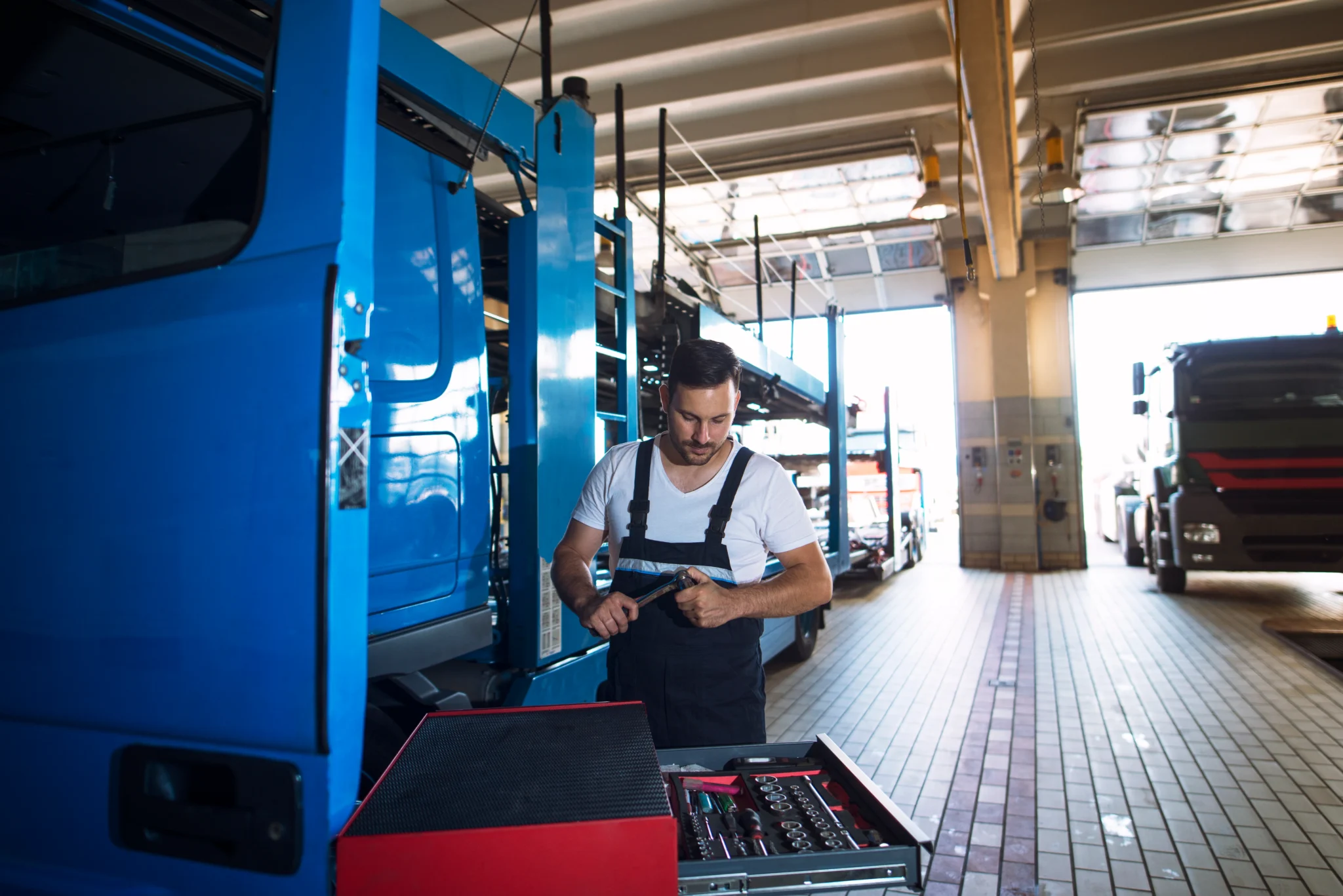Choosing the Right Toolbox for Your Truck: Durability, Fit & Function

A truck full of tools but nothing in its place? That’s a headache waiting to happen.
If you’ve ever spent more time looking for a wrench than actually using it, you already know how fast an unorganized truck can slow you down. Whether you’re a builder hauling gear to a remote jobsite or a weekend off-roader packing up for the trail, you need a setup that makes your work life easier.
We will walk you through everything you need to know before picking the right tool box drawers or truck bed tool box. From figuring out what fits your truck bed to understanding what makes one build tougher than the next, we’ll break it all down without fluff.
Because getting organized isn’t about vanity. It’s about working smarter, staying prepared, and ensuring nothing falls loose, on the road or off it.
Why Tool Boxes Matter More Than You Think
Honestly, we all know that a gear left loose in the truck bed is a call for damage, theft, and time wasted. Whether it’s wrenches sliding around, electrical tools exposed to rain, or climbing gear buried under everything else, you lose productivity every time you hunt for tools.
A well-constructed truck bed tool box or drawer system solves these issues in one go as it:
- Keeps tools safe from other laid elements
- Reduces noise and movement
- Saves time with structured organization
- Enhances security from theft
- Improves weight distribution in the truck
These may sound like small wins, but for professionals working long days or off-roaders deep into rough country, small wins add up fast.
The Three Key Pillars: Durability, Fit, and Function
1. Durability: What Survives Your Workday?
When you’re working out of your truck day in and day out, your gear needs to take a beating and keep going. A box that looks solid in a showroom might fall apart after one winter on salted roads or a month of heavy-duty job site use. So, before you lock in a toolbox setup, start with the material.
- Aluminum is light and naturally rust-resistant. It’s a popular choice for trades that need to stay within payload limits while still protecting their tools from moisture.
- Steel feels tougher in your hands. It’s heavier and offers great security, but unless it’s coated properly, it’s going to rust fast in wet or salty conditions.
- Stainless steel is the long-game choice. It holds up to corrosion, stays rigid under pressure, and doesn’t flinch in extreme weather. It’s expensive, yes, but worth it if you’re out in the elements daily.
Of course, the build itself matters just as much.
Here are a few things to consider before you buy:
- Do you drive through snow, rain, or along coastal roads?
- Are your tools heavy enough to dent thin metal on rough terrain?
- Is your truck bed exposed to flying debris, forklift loading, or hard landings?
The right toolbox isn’t the toughest one out there. It’s the one that can take your kind of punishment without giving in.
2. Fit: One Size Does Not Fit All
Even the most rugged toolbox is worthless if it doesn’t integrate smoothly with your truck setup.
Common Toolbox Types:
- Crossover Tool Boxes: Sit behind the cab and span the width of the truck bed. Great for visibility and security.
- Side-Mount Boxes: Attach along the bed rails. Perfect for tools you access frequently.
- Underbody Boxes: Ideal for flatbeds or service trucks.
- Chest Boxes: Sit flush on the truck bed floor, good for low-profile storage.
- Tool Box Drawers (Sliding Systems): Maximize access and visibility, ideal for tradespeople who work out of the truck daily.
Each style has pros and cons depending on how much bed space you can spare, how often you open the box, and what type of tools you use.
Fit Checklist:
- Measure your truck bed carefully by length, width, and depth.
- Consider tailgate clearance and wheel well intrusion.
- Think vertically: Will a top-opening box clash with a tonneau cover or camper shell?
- Weight distribution matters, especially if you’re towing.
Custom fit can mean the difference between a box that slides out effortlessly and one that warps under strain. For those who need something highly specific, custom truck tool box fabrication is often the best way to ensure your tool box works with your truck and not against it.
3. Function: What Do You Actually Need It to Do?
It’s easy to get distracted by shiny finishes and high-end hardware. But at the end of the day, a toolbox is there to work. That’s why function should be your starting point, not an afterthought.
Before you even browse options, take time to think through your day-to-day tasks. The type of work you do and how often you need to access your tools should drive your decision.
Let’s break that down. Ask Yourself:
- Do you carry power tools that need charging? Look for toolboxes with power access ports.
- Are you storing delicate measuring gear? Opt for drawer dividers and lined compartments.
- Do you need fast access multiple times a day? Tool box drawers and sliding trays speed up workflow.
- Do you load heavy gear? A drawer system that extends 70–100% helps avoid back strain.
In short, form follows function. Choose a toolbox that saves you time, not one that adds steps between you and the job.
What Makes Tool Box Drawers So Popular?
Among all options, tool box drawers have gained serious popularity with professionals for good reason. Unlike traditional boxes, where everything stacks or piles up, drawers offer structured organization, ease of access, and better weight distribution.
Key Advantages:
- Full extension slides: Access every tool without crawling into the bed
- Custom compartments: Sort sockets, bits, and fasteners by size and use
- Lockable drawers: Add an extra layer of security
- Smooth glide systems: Built to withstand dirt, dust, and heavy loads
If you’re someone who needs to access tools multiple times a day, investing in a drawer system isn’t a luxury anymore.
Explore more about tool box drawers that are engineered for real-world use.
Factory-Made vs. Custom Tool Box Fabrication: Which Is Better?
When it comes to truck tool storage, convenience often pushes buyers toward factory-made boxes. They’re widely available, easy to install, and usually more affordable upfront. But if your truck isn’t stock or your workflow isn’t basic, a factory-made box might not cut it.
Custom toolboxes come into play when your setup includes modifications like lift kits, generator mounts, camper shells, or auxiliary power systems. These setups need storage that fits with intention, not approximation.
Here’s what a custom box brings to the table:
- Tailored Fit: Built around your specific truck model and added accessories, with no wasted space or awkward overhangs.
- Optimized Storage: Compartment layouts can reflect how you actually use your tools, no more digging or stacking.
- Higher Durability: Custom fabricators often use thicker materials, better hinges, and weatherproof seals built for real use.
- Extras That Matter: Powder coating, interior lighting, logo embossing, and locking systems, each feature can be added by design, not as an afterthought.
For tradespeople, technicians, or anyone who depends on their truck daily, investing in a custom solution usually pays off long-term. In short, if your truck is your livelihood, don’t settle for “close enough.” Go for the setup that works as hard as you do.
Common Mistakes to Avoid
Getting the right toolbox is just half the job; installing it wrong can undo all the benefits. These are the pitfalls to avoid:
- Skipping the Fit Check
Even if the toolbox is “universal,” don’t assume it’ll sit flush with your bed rails or avoid contact with your accessories. Dry-fit first before drilling or clamping. - Ignoring Load Distribution
Mounting too far forward or back can throw off your truck’s balance. Position the box where the weight won’t strain the suspension or affect handling. - Not Using Reinforcement
If your toolbox holds heavy equipment, reinforce the mounting points. Vibrations and off-road use can loosen fasteners over time, so extra support helps them stay secure. - Wiring Without Planning
If you’re running lights or charging ports from your toolbox, plan the wiring route. Improper placement could expose wires to weather or moving parts.
A clean, solid install makes your toolbox safer, more reliable, and longer-lasting. Don’t rush this part.
Maintenance Tips to Make It Last
Buying a good toolbox is only the start. Like any part of your work truck, it needs regular upkeep to stay reliable. Here’s how to keep it performing well for years:
- Lubricate moving parts. Drawer slides, latches, and hinges work better with regular lubrication. A few drops of oil can prevent annoying squeaks and sticky pulls.
- Clean and inspect weather seals. Dust and moisture wear out seals over time. Wipe them down every month or so and replace if they’re brittle, cracked, or loose.
- Touch up paint when scratched. Even powder-coated boxes can develop chips or scratches. Touching up exposed metal areas prevents rust from setting in.
- Tighten fasteners. Vibration from regular driving can loosen bolts, nuts, and handles. A seasonal once-over with a wrench can help you catch any issues early.
- Empty and reorganize twice a year. It’s easy to let clutter build up. Taking time every six months to clean, sort, and reorganize keeps your setup efficient and gives you a chance to spot wear or damage.
Conclusion
Your truck is your mobile base, your backup, and your daily partner. And how you use it comes down to how you organize it. Whereas a tool box is a part of how you get things done.
Whether you’re loading up for a long workday or a weekend trip, your tools deserve a space that keeps up. A setup that’s thought through, not thrown together. One that makes your day smoother, not harder.
So slow down. Double-check your needs. Make space for what matters. The right tool box doesn’t just sit in the back; it pulls its weight every day.

Hy Vee Huddle: A Complete Informational Guide

The Connection Between Accounting Firms And Regulatory Compliance

Why Smart Startups Choose Custom AI Business Solutions Today

The Digital Lifeline: How Technology is Revolutionizing Addiction Recovery

From Clicks to Clients: Why Trust-First Local SEO Wins the Long Game

Forgot Your iPhone Password? Here’s How to Unlock It Easily

How Strikes and Step Through Bikes Are Using Tech for Better Range

NoteGPT AI Image Generator: Transforming Branding and Marketing








